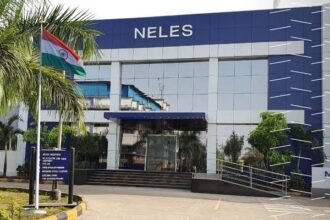The Holstein Friesian (HF) cow, with its iconic black and white coat and impressive milk production capacity, has become a popular choice for dairy farmers worldwide. Originating from the northern European regions of the Netherlands and northern Germany, the breed has made its way into the hearts and farms of India, where dairy farming plays a critical role in the economy. Known for its high milk yield and adaptability to varying climatic conditions, the Holstein Friesian cow is in high demand across the country. However, before deciding to invest in this breed, it’s essential to understand the pricing of HF cows, the factors influencing their prices, regional variations, and the economic implications of this investment.
Factors Influencing the Price of Holstein Friesian Cows in India
The price of an HF cow in India is influenced by a combination of factors that determine its overall value. Understanding these elements can help farmers make informed decisions when purchasing HF cows for their dairy farms. Here are the most important factors that determine the price:
1. Age of the Cow
The age of an HF cow is one of the most crucial factors influencing its price. Typically, younger cows or heifers (cows that have not yet calved) are priced lower, as they have not yet reached their peak milk production. On the other hand, cows that are in the prime of their lactation cycle, particularly those that have had a few lactations already, tend to be priced higher. A young heifer may cost between ₹40,000 to ₹50,000, while mature cows in their peak production phase can be priced upwards of ₹80,000 to ₹1,00,000 depending on their quality and pedigree.
2. Milk Production Capacity
Milk yield is the primary reason why Holstein Friesian cows are so sought after. The ability to produce large amounts of milk is what makes them such a valuable asset for dairy farmers. On average, an HF cow can produce between 25-30 liters of milk per day, depending on factors such as feed quality, health, and management. The higher the milk yield, the higher the price of the cow. For cows that produce milk beyond the average daily yield, prices can exceed ₹1,00,000.
If the cow has a proven record of consistent milk production, it can significantly affect the price. For instance, cows producing more than 25 liters per day or those known for their high-fat milk content are often priced much higher.
3. Health and Genetic Quality
The health of the cow is paramount when determining its price. A healthy cow, free from diseases and illnesses, will generally cost more than one that has been affected by health issues. The overall body condition of the cow is also an essential factor. Cows with good conformation, strong bones, and healthy udders typically fetch a higher price.
The genetic lineage of the cow is another critical factor in pricing. Holstein Friesians with a strong pedigree, proven to be from high-quality genetic lines that yield excellent milk production and disease resistance, often come at a premium. Cows with a documented record of superior genetics are highly prized by farmers looking to improve their herd’s quality.
4. Market Demand and Regional Supply
The price of HF cows can also be influenced by the market demand and supply in a particular region. In states like Punjab, Haryana, and Uttar Pradesh, where dairy farming is highly profitable and well-established, there tends to be a higher demand for Holstein Friesian cows. This demand often drives up prices in these areas.
On the other hand, in regions where dairy farming is less developed, the demand for HF cows might be lower, resulting in more affordable prices. For example, states like West Bengal and Bihar, while having growing dairy sectors, may offer HF cows at more competitive prices compared to the major dairy-producing states.
5. Lactation Stage
The stage of lactation plays a significant role in the price of an HF cow. Cows that are in the early stages of lactation, which is the phase where they are producing the most milk, will typically be priced higher. Cows that are in late lactation or dry period may cost less due to their reduced milk yield during that time.
For example, a cow that is producing milk in the first few months of lactation can be priced higher due to its immediate productivity. In contrast, a cow that has just finished its lactation period or is about to calve may be priced lower as the milk production would be temporarily halted.
Regional Variations in Holstein Friesian Cow Prices in India
The price of Holstein Friesian cows can vary greatly depending on the region in India. Several factors, including the level of dairy farming in the area, the demand for milk, and availability of the cows, influence the pricing trends across the country.
1. Northern India
In northern India, particularly in states like Punjab, Haryana, and Uttar Pradesh, Holstein Friesian cows are highly sought after due to the thriving dairy industry. These states are known for large-scale milk production and have a high demand for high-quality dairy cows. As a result, the prices for HF cows in these regions tend to be on the higher end, with prices ranging from ₹50,000 to ₹80,000 for cows with average milk production. Premium-quality HF cows, especially those in peak lactation, can exceed ₹1,00,000 in price.
Punjab and Haryana are home to numerous dairy farms, and many breeders specialize in selling high-yielding HF cows, leading to a robust market for these cows in the region.
2. Southern India
Southern India, including states like Tamil Nadu, Kerala, and Karnataka, has seen a gradual rise in dairy farming, and the demand for Holstein Friesian cows is increasing. However, due to less intense competition and a lower supply of HF cows compared to northern states, prices here might be slightly lower. Generally, HF cows in southern India range from ₹40,000 to ₹70,000, depending on their milk yield and overall health. Premium cows with excellent genetics may be priced higher, especially in urbanized areas with growing demand for dairy products.
3. Western India
In states like Maharashtra and Gujarat, the demand for HF cows is also growing due to the expansion of the dairy industry. In Maharashtra, HF cows with average milk production are priced between ₹40,000 to ₹60,000, while those with superior genetics or high milk production can fetch up to ₹1,00,000. Gujarat, known for its milk cooperatives and the dairy industry, also has a high demand for quality dairy cows, contributing to higher prices.
4. Eastern India
Eastern states like West Bengal and Bihar have a relatively nascent dairy farming sector. As a result, prices in these areas can be more affordable compared to more developed dairy regions. However, demand is steadily growing, and farmers are increasingly investing in Holstein Friesian cows for better milk yields. The price of an HF cow in these regions may range from ₹30,000 to ₹60,000, with variations based on the quality of the cow.
Economic Considerations and Return on Investment
Investing in Holstein Friesian cows can be a profitable venture, but it requires careful economic planning. The initial cost of purchasing an HF cow can be high, but it is important to weigh this against the potential return on investment (ROI) from milk production.
1. Initial Investment
The initial investment for purchasing an HF cow typically ranges from ₹40,000 to ₹1,50,000, depending on the cow’s quality, health, and milk-producing capacity. While the upfront cost may seem steep, it is important to consider the long-term benefits that can come from owning an HF cow.
2. Return on Investment (ROI)
An HF cow’s high milk yield is a primary factor contributing to ROI. An average HF cow can produce around 20 to 30 liters of milk per day, and depending on local milk prices, the cow can generate a significant income for the farmer. At an average milk price of ₹40 per liter, an HF cow could earn ₹800 to ₹1,200 per day, leading to an annual income of ₹2,92,000 to ₹4,38,000. This makes the investment in an HF cow worthwhile over time, especially with proper management and care.
3. Maintenance Costs
While the returns are promising, it is also important to consider the ongoing maintenance costs associated with raising HF cows. These costs include quality feed, veterinary care, shelter, and labor. Farmers must also factor in the costs of regular health checkups, vaccinations, and supplements required to maintain the cow’s health and milk production levels.
4. Government Support and Subsidies
Several government schemes and subsidies are available for dairy farmers in India to make the purchase of high-quality cows more affordable. These schemes provide financial assistance, training, and access to better farming practices, helping farmers increase their productivity and profitability.
Conclusion
Holstein Friesian cows represent a significant investment for dairy farmers in India, and understanding the factors influencing their price is crucial for making informed decisions. Prices vary depending on the region, cow quality, milk production, and health status. While the upfront cost can be high, the long-term benefits of investing in high-yielding cows often outweigh the initial investment. By considering the maintenance costs, potential returns, and government support available, dairy farmers can successfully navigate the economic landscape of Holstein Friesian cows and contribute to India’s growing dairy industry.


